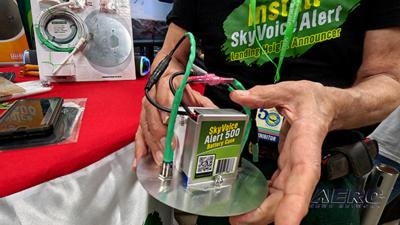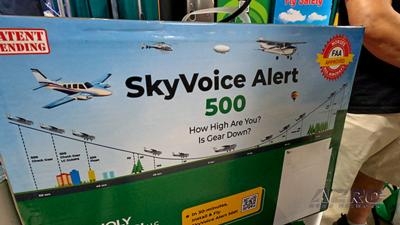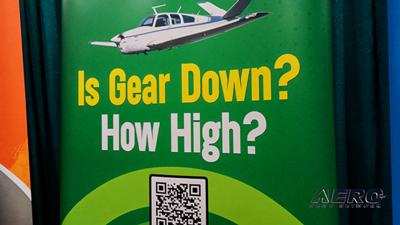At the Intersection of NORSEE and Innovation
By Gene Yarbrough - August 11, 2024
The FAA's Non-Required Safety Enhancing Equipment (NORSEE) rule is a regulatory framework that allows for the installation of certain safety-enhancing equipment in aircraft without the need for traditional certification processes. Introduced to promote the adoption of advanced safety technologies, the NORSEE rule covers equipment such as angle of attack indicators, traffic advisory systems, weather information systems, and electronic visual displays among others.

Under NORSEE, manufacturers can develop and install these safety devices more quickly and cost-effectively, as the equipment does not need to undergo the rigorous certification process typically required for other avionics. This approach aims to enhance safety by making advanced technologies accessible to a broader range of aircraft, particularly in general aviation. The rule emphasizes that while the equipment is not mandatory, its installation can significantly improve flight safety and situational awareness for pilots.
The rule incentivizes creativity and innovation and permits installation of certain systems using a workaround from the usual quagmire of certification including STC’s or Field Approval (337) methods. This relaxed certification path makes this an attractive arena for developers to bring to market a range of beneficial technologies. One such system is the Holy Micro SkyVoice Alert 500 Landing Height System which is an innovative aviation technology designed to assist pilots during the critical landing phase.
Utilizing advanced sensors and algorithms, it accurately measures the aircraft's height above the ground, providing real-time data to the cockpit. This system enhances landing precision, particularly in challenging conditions such as poor visibility or uneven terrain. By offering precise height information, the Holy Micro system helps pilots execute smoother, safer landings, reducing the risk of hard landings and runway overruns. Its integration into modern avionics underscores the ongoing advancements in aviation safety and pilot assistance technologies.

The Holy Micro Landing Height System operates using advanced sensor technology to measure the aircraft's height above the ground with high precision. Here's a detailed look at how it works: Sensors: The system employs a combination of laser rangefinders, radar, or ultrasonic sensors.
These sensors emit signals towards the ground and measure the time it takes for the signals to reflect back. The time delay is used to calculate the distance from the aircraft to the ground.
Data Processing: The raw data collected by the sensors is processed by a central computing unit. This unit uses sophisticated algorithms to analyze the signal reflections and determine the exact height above the ground. The system filters out noise and corrects for any anomalies to ensure accurate readings.
Real-Time Updates: The processed height data is continuously updated and transmitted to the aircraft's audio system. Pilots receive real-time information about their altitude above the terrain, typically announced in feet or meters. These alerts help pilots maintain the correct descent rate and prepare for touchdown, especially in low-visibility conditions or on uneven runways.
Integration with Avionics: The Holy Micro Landing Height System can be integrated with the aircraft's existing avionics suite. This integration allows the system to work seamlessly with other flight instruments and aids, such as the altimeter and glide slope indicators.

Enhancing Safety: By providing precise height information, the system helps pilots execute smoother, more controlled landings. It reduces the risk of hard landings, runway overruns, and other landing-related incidents. Pilots can rely on the system to maintain the correct approach path and touchdown point, even in challenging conditions. Overall, the Holy Micro Landing Height System enhances flight safety by giving pilots critical information during the landing phase, allowing for more informed decision-making and improved landing performance.
Early adopters of NORSEE compliant technologies will reap the benefits of easy implementation of these systems and the added safety of incorporating the information into their flight profiles. Hopefully this commonsense approach to adding beneficial technologies to older aircraft will expand and allow even greater improvements in the future.
